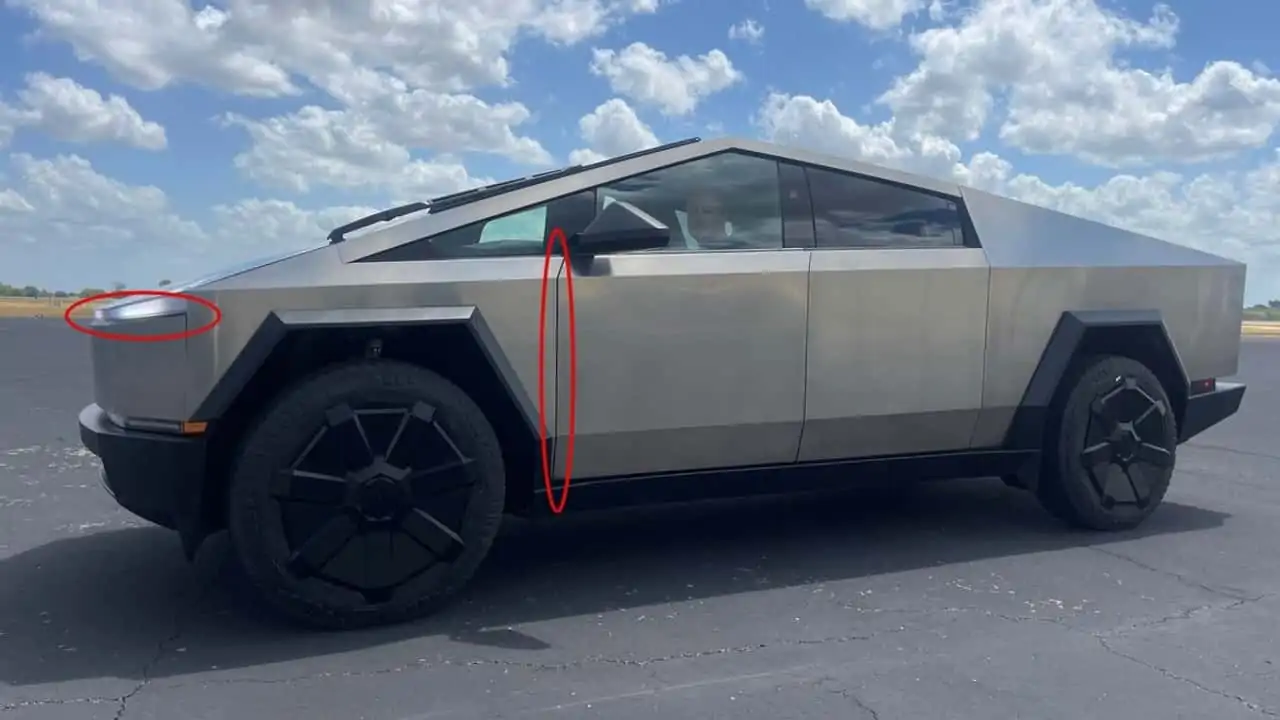The Tesla Cybertruck’s design certainly turned heads and generated a lot of conversations when it was unveiled in 2019. Its unconventional, futuristic appearance, stark angles, and unique features led to polarized reactions; some admired its boldness and vision for the future of pickup trucks, while others questioned its feasibility for production and real-world use.
Top key points about the Tesla Cybertruck production challenges:
- The flat body panels are proving to be very difficult to manufacture to the required tolerances.
- There are concerns about the truck’s ability to pass crash and pedestrian impact regulations.
- Elon Musk is confident that tighter tolerances will fix the problems, but other experts in the industry are sceptical.
- Only time will tell whether the Cybertruck will be a success.
- The Cybertruck is a very ambitious project, and Tesla will need to overcome some significant challenges if it is to be a reality.
- The Cybertruck’s design is very unconventional, and it is not clear how it will perform in crash and pedestrian impact tests.
- It is important to be realistic about the challenges that Tesla faces. The Cybertruck is not a sure thing, and it is possible that it will never be produced.

The summary highlights criticisms from a car designer named Adrian Clarke regarding the Cybertruck’s design and production. Clarke’s remarks are not unprecedented; since its unveiling, many in the automotive industry have wondered about the practicality of such a unique design. Here are some points to consider:
Tolerances & Panel Issues
Most cars have curves and shapes that can hide imperfections in panel gaps. With flat panels like those on the Cybertruck, imperfections could indeed be more noticeable. This has been a point of criticism from various experts in the car manufacturing domain.
Thermal Expansion & Contraction
Vehicles experience thermal expansion and contraction based on environmental conditions. This can affect various components, including the body panels. The Cybertruck’s design would require careful attention to how these panels fit together under different conditions.
Regulations
Every new vehicle design, especially one as unique as the Cybertruck, has to pass a myriad of regulations, including crash tests and pedestrian impact assessments. Clarke’s doubt about the Cybertruck passing these regulations echoes the concerns of others in the industry.
Design Philosophy
Tesla, under Elon Musk’s leadership, has consistently pushed the boundaries of automotive design. The Cybertruck is no exception. While some see it as a bold reimagining of what a truck can be, others, like Clarke, view it as too reductive.
However, a few things to remember:
Elon Musk’s Ambition
Time and again, Musk has set seemingly impossible targets and achieved many of them. While it has faced delays and challenges, Tesla has revolutionized electric vehicles in various segments. Musk’s confidence in addressing the Cybertruck’s production issues could be rooted in his past experiences.
Tesla’s Track Record
Tesla’s cars have faced criticism before. The Model X, for instance, was initially met with scepticism due to its unique falcon-wing doors, but the company managed to address many of the initial concerns.
Consumer Interest
The Cybertruck garnered significant attention and pre-orders following its unveiling. This interest indicates a market segment that’s keen on the truck, even with its unconventional design.
Conclusion
While the criticisms are valid and the challenges are real, it’s too early to write off the Cybertruck. Tesla has faced and overcome hurdles before, and it’s possible they’ll do the same with the Cybertruck. However, only time will tell how the production version will fare and how the company will address these challenges.





































